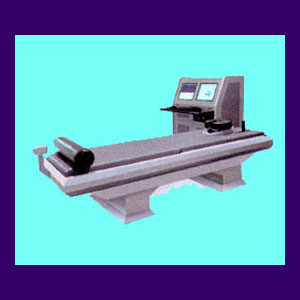
Nonsurgical back pain treatment is recommended for most patients due to several very important reasons First, surgery is dangerous and has many risks inherent to the process. Many patients suffer complications or poor results which make them worse, instead of better. Second, many nonsurgical methods of care actually demonstrate about the same curative results as surgical interventions. Last, surgery is always an option down the line if more conservative measures can not end the pain first.
These are all positive theoretic ideals associated with many noninvasive back pain therapies. Now let’s discuss the negative realities of some nonsurgical treatments.
Nonsurgical Treatment Limitations
Nonsurgical spine treatment can be a poorly conceived and illogically executed series of blunders for patients with chronic pain. Many patients are kept in conservative therapy simply to get the most money from them or their insurance carrier. This is true regardless of whether the treatments are doing anything at all to help them.
Statistics demonstrate that treatments which do not cure patients within 6 to 12 months will have almost no chance of permanently resolving painful complaints at any point during the patient’s life. This is very terrifying indeed.
Nonsurgical Back Pain Treatment Theory
Most noninvasive back pain treatment options are symptomatic in nature. Symptomatic back pain treatments are designed to make a condition more livable, but do nothing at all to cure the pain or resolve the underlying sources of the symptomatic expression.
Back pain drugs are the most common methods used, although chiropractic, TENS and physical therapy are not far behind. These treatments may be useful for people with accurately diagnosed pain complaints and especially patients who suffer from pain due to a specific and documentable back injury.
Symptomatic treatment is not a good option for patients with general back pain blamed on nonspecific causes or degenerative back pain blamed on normal spinal aging. In these cases, the condition will almost never improve enough to allow a cessation of treatment and the patient becomes a slave to their doctor or therapist, since they are now stuck in therapy long-term in order to remain pain-free.
Nonsurgical Back Pain Treatment Alternatives
The logical alternative to noninvasive treatment is, of course, back surgery. However, while continuing symptomatic treatment is ill advised, surgery is most commonly a far worse fate. Spinal surgery demonstrates truly terrible statistics for curing any back pain problem permanently and many patients wind up much, much worse after an operation. Some still have their pain, while others suffer an increase in symptoms.
Failed back surgery is a very real last stop on the treatment train and many patients are left at this abandoned station to spend the rest of their days in utter misery and regret. Your surgeon is not returning your calls anymore? Yeah, join the group.
Surgery is fine in cases of emergency, such as after a car accident or sports injury. However, relying on surgical intervention for average back pain complaints, which have resisted more conservative measures, might be the perfect recipe for disaster. Avoiding back surgery should be every patient’s goal and innermost desire.
Nonsurgical Back Pain Treatment Tips
Reading this article makes most people feel that there is no solution for chronic back pain. It is a “damned if you do… damned if you don’t” catch 22. However, things are not that grim.
Some patients do enjoy a permanent cure from surgical or nonsurgical modalities. This indicates an accurate diagnosis and a successful treatment strategy. Does this occur? Sure… but rarely.
We all know that back pain is one of the most treatment-resistant of all health concerns. This is not due to any deficiencies or weakness in the spine, but instead, due to the completely unenlightened Cartesian philosophy embraced by the modern medical system.
Chronic pain of any variety is often caused or contributed to by a psychoemotional process. This fact is utterly ignored by many medical care providers. These professionals would rather rip into healthy tissues with a surgical knife, than consider the mere possibility that the symptoms might be a psychosomatic back pain syndrome.
Meanwhile, knowledge therapy continues to prove itself an extremely effective method of dealing with pain anywhere in the body. There are no risks, no costs, no ongoing treatments and no surgeries involved. So, tell me, after reading this, what option have you overlooked when treating your back pain?
Back Pain > Treating Back Pain > Nonsurgical Back Pain Treatment





